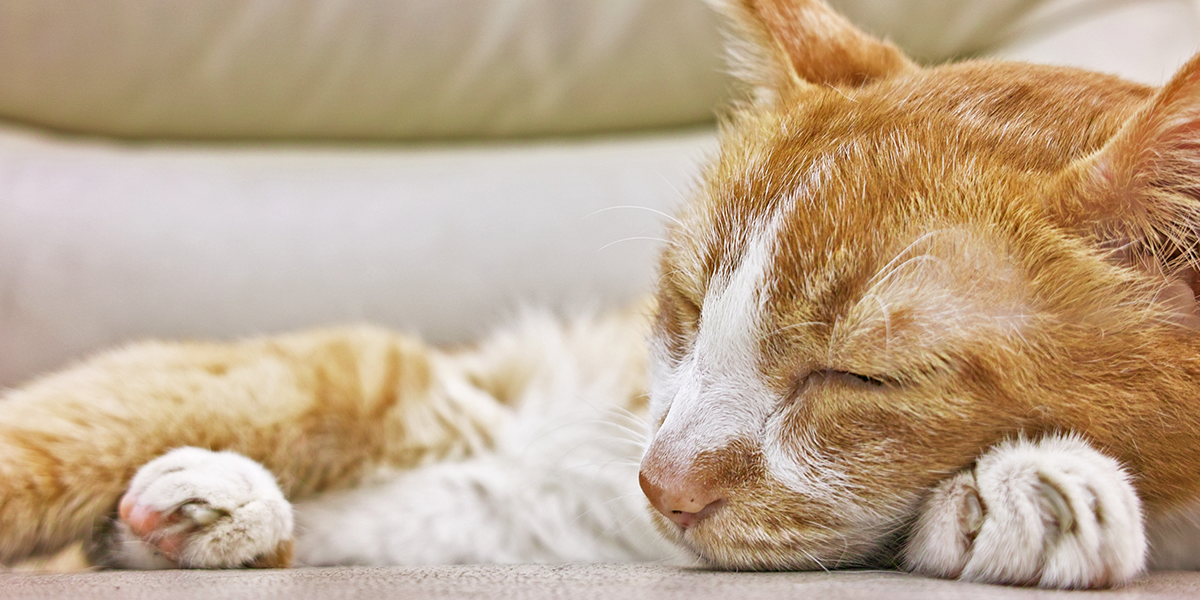Anaemia is a condition in which there is a decrease in the number of erythrocytes per microliter, packed cell volume (PCV), hematocrit, and haemoglobin value.

Anaemia is a condition in which there is a decrease in the number of erythrocytes per microliter, packed cell volume (PCV), hematocrit, and haemoglobin value. Anaemia caused by chronic kidney disease has been well characterized in domestic animals like cats and dogs.
Red blood cells (RBCs) are produced in the bone marrow via erythropoiesis. The production of red blood cells (RBCs) requires an adequate supply of erythropoietin (EPO) for the development and maturation of erythrocytes. Erythropoietin is produced by the nephrons.
Its synthesis is mainly stimulated by renal hypoxia. The production rate of erythropoietin is inversely proportional to the oxygen-carrying capacity of the blood. In chronic kidney disease (CKD), the kidney is unable to produce a sufficient amount of erythropoietin, which is required forRBCs production. A deficiency in RBC production will lead toanaemiaa in cats suffering from chronic kidney failure.
Geriatric cats are most commonly affected by chronic kidney failure. Anaemia in CKD is a common complication, and CKD is a common disorder in domestic cats. According to estimates, 15–30% of geriatric cats will develop chronic kidney disease (CKD), and 30-65% of these cats will develop anaemia as their renal disease worsens.
Erythropoietin in erythrocyte production:
Erythropoietin is a hormone responsible for the production of red blood cells. The secretion of erythropoietin occurs in the peritubular interstitial cells of the inner renal cortex and outer medulla of the kidney.
Other than nephrons, the liver, brain, uterus, peripheral endothelial cells, muscles, and insulin-producing cells also produce erythropoietin. With the increase in kidney disease, the number of erythropoietin-producing cells decreased. Renal hypoxia is the primary stimulus for erythropoietin secretion.
Causes of anaemia in CKD:
Decreased Erythropoiesis:
Inflammation leads to anaemia in renal disease and chronic kidney disease. It is known to be a chronic, pro-inflammatory state. Hepcidin-induced iron deficiency is an acute-phase protein. Erythropoiesis is also decreased by lack of erythropoietin, inflammatory cytokines, absolute iron deficiency, functional iron deficiency, uremic toxins, ACE inhibitors, angiotensin receptor antagonists, hyperparathyroidism, and marrow infiltration.
Shortened erythrocyte survival:
RBC survival is decreased by uremia or uremic toxins, hemolysis, and premature removal of erythrocytes by reticuloendothelial cells.
Increased RBC loss:
Anaemia in CKD is due to blood loss, blood sampling, iron deficiency, copper deficiency, and hematopoietic factor deficiency. Uremia affects platelets and causes uremic thrombocytopathy. Uremic toxins cause vascular damage, changes in platelet function and platelet-endothelial interactions, and increased levels of nitric oxide in uremic states.
Chronic kidney disease can occur due to inherited, congenital (pups born with the problem), iron deficiency, infection, cancer, blood loss through the alimentary tract, or disease that causes disruption of RBCs (hemolytic anaemia).
Pathogenesis of anaemia in chronic renal disease
Anaemia in renal disease is a multifactorial disease. The main cause of anaemia in CKD patients is a lack of erythropoietin. Other factors that contribute to anaemia in renal disease include inflammation. Other causes of suppressed erythropoiesis are the influence of uremic toxins on RBC survival, hyperparathyroidism, marrow infiltration, gastrointestinal hemorrhage, or other sources of blood loss.
Symptoms:
As anaemia is due to chronic kidney disease, the symptoms are related to both CKD and anemia. Following are a few of the symptoms related to anaemia in the presence of chronic kidney disease: Weight loss, poor appetite, fatigue, swelling of the ankles, depression, rapid heartbeat, tiredness, seizures, and itchy skin.
Diagnosis:
A history of cat health and a background history of symptoms are needed. Afterward, after taking a complete history, the veterinarian will conduct a complete physical examination. Laboratory tests include a complete blood profile, a chemical blood profile, a complete blood count, and a urinalysis.
The results of these tests will provide valuable information about the cause of kidney failure and the level of anaemia related to it. The level of erythropoietin in the blood was determined. Hem-agglutination assays and ELISA were performed for measuring erythropoietin.
A bone marrow examination was performed. X-rays and ultrasounds are performed to determine the abnormal structure of the kidneys that is typical of chronic kidney disease. Ultrasounds show kidneys that are smaller than normal or irregularly shaped, both characteristics of chronic kidney disease.
Treatment:
Treatment involves treating the symptoms related to chronic kidney failure and anemia. Transfusion therapy will be performed in cases of severe anemia. The disadvantages of blood transfusions include the possibility of immune reactions.
For chelation therapy, iron will also be added as supportive therapy if the iron level is low in the blood. Treated with oxyglobin, a haemoglobin-based oxygen carrier. Erythropoietin replacement, a darbepoetin structural analogue of EPO, is used in anaemic cats.
The treatment of anaemia with erythropoietin replacement therapy will enhance your cat’s overall health, including an increase in appetite and activity level. Cats will be more playful, retain more weight, and be better able to cope with cold intolerance. Despite these short-term advantages, patients with chronic renal failure typically face a poor long-term prognosis.
Preventive measures:
An iron supplement can prevent anemia. Always choose iron-rich foods, including lean meats such as beef and chicken. Vitamin B12 and folic acid supplements given in cases of vitamin B12 deficiency cause pernicious anaemia.
This article is jointly authored by Dr. Aziz ur Rehman, Muhammad Hamza, Waqas Haider, and Shumaila Kousar from the University of Veterinary and Animal Sciences Lahore, sub-campus Jhang.